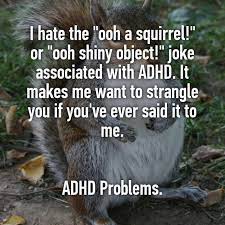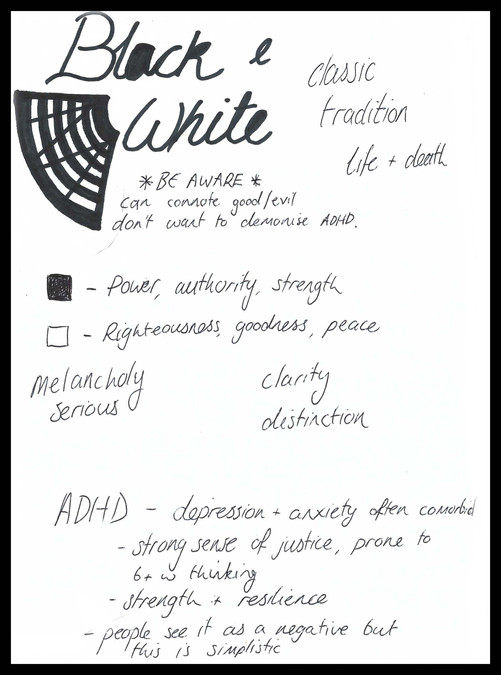ADHD and Idea Formulation
- Liz Jenkin

- May 19, 2022
- 4 min read
What is ADHD?
ADHD is a neurodevelopmental disorder that affects how our brains work. Essentially, our brains don't create enough dopamine, which is the "feel-good chemical" released when we complete a task or do something enjoyable. The dopamine we do get is also used less efficiently, so where a neurotypical brain may feel satisfied after a job well done, the ADHD brain moves on more quickly and searches for the next dopamine boost. This is why many ADHDers struggle with inattention and managing distractions - we try to listen, but our brains are busy seeking out stimulation. We also often have difficulties with starting or remaining on task, simply because we don't get the same "reward" from tasks as most people. Many of us are also hyperactive, whether physically or mentally, because of our need for stimulation and sensory input. Our brains tend to move faster - it can feel a little frantic at times.
Dopamine is also responsible for managing our executive functions - these include our ability to plan, organise, manage time, and control emotions, among many others. This is why many of us with ADHD appear to be forgetful, lazy, messy, or irresponsible. Frankly, most of us are none of these things - we're simply neurodivergent brains trying to get by in a neurotypical world.
The core symptoms or traits of ADHD are split into two categories, and an ADHDer may struggle with things from one category or both. (This is not an exhaustive list, just some of the most common traits.)
Inattentive:
trouble with focusing or staying focused
difficulty managing distractions and maintaining attention
starting or keeping on task
memory
organisation
Hyperactive / Impulsive:
trouble with feeling restless and fidgety
feeling as though you're being driven by a motor
talking too much or interrupting
impatience
difficulty managing impulses and emotions
Misconceptions and stereotypes
There are many misconceptions surrounding ADHD, and a number of harmful stereotypes. Through my photography I would like to combat these misconceptions, or at the very least, avoid perpetuating harmful messages. In cases where a stereotype may have a basis of truth, it is important to portray this in a respectful way that doesn't make light of the genuine difficulties some people face. Though ADHDers are often easily distracted, for example, I will avoid the trope of a dog distracted by squirrels. (Thanks, Disney!)
Misconception or Stereotype | Considerations to Make |
ADHD only affects boys and/or children. | My photos will largely or solely feature women. I have one particular model in mind - a woman with ADHD. |
"You don't look like you have ADHD." | There is no "look". I will photograph normal people and not turn them into caricatures. |
You have to be hyperactive to have ADHD. | External hyperactivity is just one facet of ADHD. Some photos will be "low-energy" or portray internal hyperactivity. |
Everyone with ADHD is easily distracted, especially by electronics. | Some are easily distracted, but not all. Distractions can be anything - the world around us, our own thoughts - and including electronics or squirrels only serves to perpetuate negative stereotypes. |
ADHD is all negative. | It has negative and positive sides, and it is important to represent both. Exhibition images will be split evenly. |
It is caused by bad parenting, video games, sugar... | I will make no reference to causes or treatments, this is just about the lived experience. Video games are often an escape so, if included, will be portrayed in a positive light. |
Obsessed with fidget spinners. | Once a useful tool for attention-regulation, these have become associated with attention-seeking and the "trend" of faking disorders. |
Common phrases like "ants in their pants", "head in the clouds", "bouncing off the walls". | Avoid these stereotypes as they trivialise ADHD. Find other ways to visually represent inattention and hyperactivity. If using common phrases, ensure they don't have derogatory connotations. |

While I have taken some inspiration from one of my previous photos (above), I am conscious that the angsty "hands on head in despair" photo is overdone in mental health photography. What I take from my image, however, is not the posing or the anguish, but the effect I made on the print by burning it and causing the resin to melt and crack. I will have to experiment with different types of paper and techniques, but I am interested to see if I can use fire to add further dimension and meaning to my prints.
Quotes and Experiences
I asked people what they liked and disliked about their ADHD. Some of these were from friends, others from anonymous contributors from Facebook and Reddit. These are the ideas I will try to represent visually
Positive Things About ADHD:
I love my ability to hyperfocus. It makes me thorough and efficient and is a great way to apply my energy.
With ADHD, you learn to laugh at yourself. My outlook on life is shaped by my self-deprecating humour and people always comment on my bubbly personality. I’m just a ball of fun and chaos!
When I feel good I can get so much done because I have endless energy.
I love how creative I can be. My brain lives outside of the box, conjuring up a thousand ideas at once. It’s like a rainbow explosion of ideas.
I'm quick-thinking and calm in an emergency, which is really handy as I work in the ER. Lots of EMTs have ADHD.
I'm really interesting! There's nothing boring about me because I am always doing something new.
If you’re different, if you’re struggling, if you feel broken… I am here for you. My ADHD has put me through hard times but facing them has sparked an uncontainable compassion in me. I’ve been where you are, and it’s going to be okay.
I don’t think of it as purely impulsivity – it can be spontaneity – and life is so exciting as a result! Adopting my cats is one of the best decisions I’ve made.
Negative Things About ADHD:
My brain feels so sluggish. I have a million thoughts a minute but trying to process them is like walking through treacle.
My hands feel itchy all the time. Not like ticklish but restless.
I am the person who will call you up to ask you if you’ve seen my phone. I lose my keys, even if they’re in plain sight.
I’m trying to listen to you, but every little thing around me is competing for my attention. The world is bright and stimulating, and I can’t tune it out. I just want to focus on you. I’m trying.
I've been rejected and bullied for so long because I do things differently to other people. It doesn't matter how hard I try, I will never be normal and that makes me really depressed.
My brain just won’t stop. It takes me hours to get to sleep, and once I’m up I have to drag myself out of bed because I’m so tired. I’m running on four hours of sleep at best.
Can you see me? I’m a master of camouflage. I have to act normal so you can’t tell I’m different. I wish I could just be me.
Why can't people understand that I'm not lazy? It's infuriating when I try to do some work but I literally can't even start and I don't know why. I want to do it, I know how to do it, but I just can't get started. It is so disabling and exhausting.
Symbolism
References
Jessica McCabe - How To ADHD - https://www.youtube.com/c/HowtoADHD
Connor DeWolfe - https://www.tiktok.com/@connordewolfe
Rick Green - https://www.youtube.com/c/RickWantsToKnow/featured
ADHD UK - https://adhduk.co.uk




















Comments